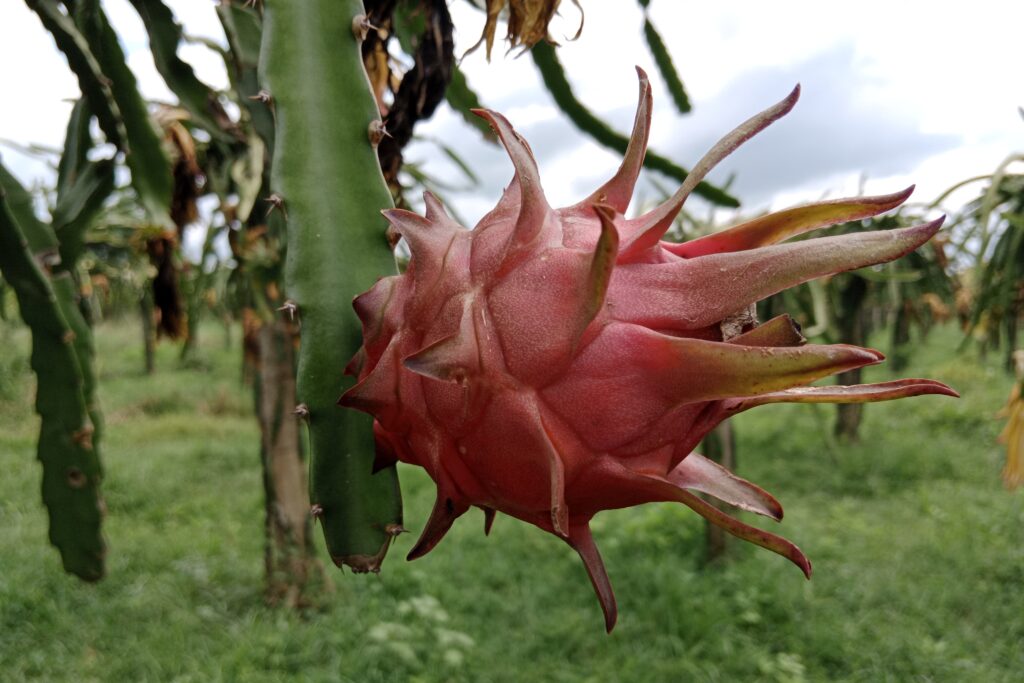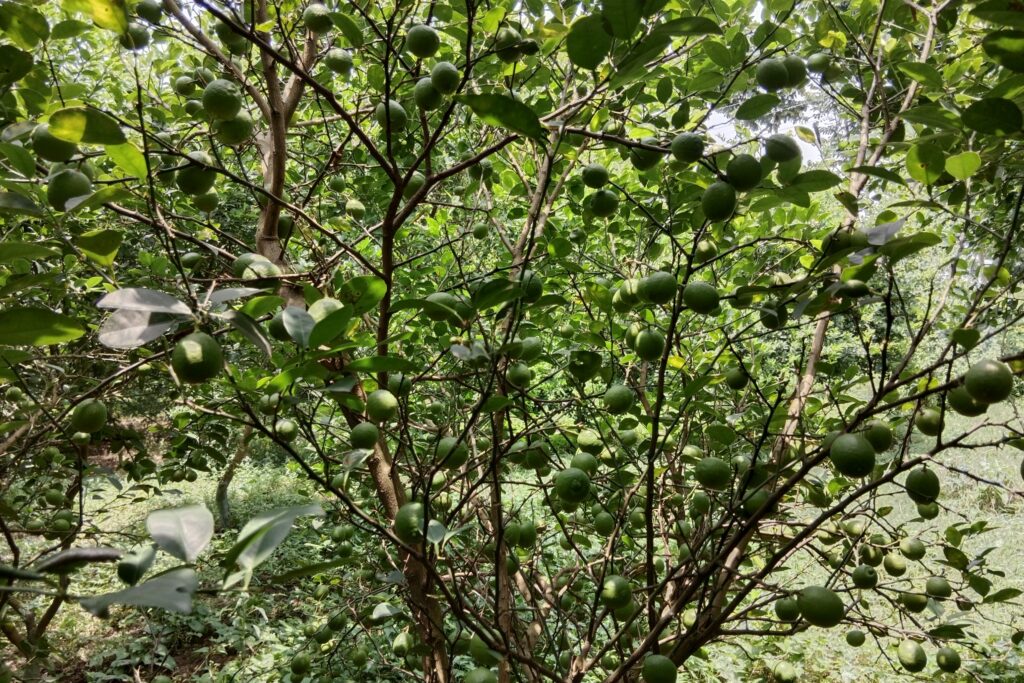Overview
Plants require a variety of essential mineral nutrients to grow, develop, and complete their life cycles. Macronutrients and micronutrients together ensure that plants can grow efficiently, resist stress, and complete their life cycles, highlighting the intricate relationship between nutrition and plant physiology.
These nutrients are categorized based on the quantities needed:
Macronutrients
Required in relatively large amounts.
Micronutrients
Needed in smaller amounts but are equally essential.
RELATED POST: PLANT CELL WALL
Sources of Macronutrients
From water and carbon dioxide
Plants acquire Carbon (C), Hydrogen (H), and Oxygen (O) through photosynthesis. Carbon dioxide (CO2) from the air and water (H2O) from the soil are their primary sources.
From soil
Soil provides other macronutrients such as Nitrogen (N), Phosphorus (P), Potassium (K), Calcium (Ca), Sulfur (S), Magnesium (Mg), and Silicon (Si). These are absorbed by roots as ions dissolved in soil water.
Essential Mineral Elements
Macronutrients
Plants need these in concentrations greater than 20 mg/l in their tissues to support their growth.
Micronutrients
These are required in concentrations of less than 20 mg/l, but even trace amounts play critical roles in plant metabolism.
Functions of Macronutrients
C, H, O
These three elements are the foundation of organic molecules, which include:
Sugars
Essential for energy storage and metabolic processes.
Proteins
Serve as the building blocks for enzymes and cellular structures.
Nucleic Acids
DNA and RNA, which store and transmit genetic information.
N, P, K, Ca, Mg, S
Nitrogen (N)
Critical for proteins, enzymes, and chlorophyll synthesis.
Phosphorus (P)
Important for energy transfer through ATP and cell membrane structure.
Potassium (K)
Helps regulate stomatal function, water use efficiency, and enzyme activity.
Calcium (Ca)
Supports cell wall structure and signal transduction in cells.
Magnesium (Mg)
Central atom in chlorophyll and involved in energy transfer.
Sulfur (S)
Integral for proteins and vitamins.
Micronutrients
Although needed in smaller amounts, micronutrients like Iron (Fe), Manganese (Mn), Zinc (Zn), Copper (Cu), and Boron (B) are indispensable for enzymatic reactions and biochemical processes, including:
- Enzymatic functions (e.g., acting as cofactors for enzyme activity).
- Electron transfer in photosynthesis and respiration.
- Cell wall integrity and hormone regulation.
Uptake and Transport of Nutrients in Plants
The process of nutrient uptake and transport in plants involves the interaction between soil, roots, and plant vascular systems, enabling the efficient absorption and distribution of essential minerals to support growth and metabolism.
Soil-Root Interface
The soil-root interface is the initial zone of nutrient exchange, where soil supplies essential ions to plant roots.
Composition of Soil
Soil is a heterogeneous mixture of
Inorganic particles: Sand, silt, clay (provide minerals and support).
Organic matter: Humus (supplies nutrients and improves soil structure).
Air and water: Contain dissolved nutrients.
Essential Ions from Soil
Plants absorb dissolved ions such as:
Nitrate (NO3-): A critical source of nitrogen.
Phosphate (HPO4²-, H2PO4-): Necessary for energy transfer and DNA synthesis.
Potassium (K+): Vital for enzyme activation and osmotic balance.
Magnesium (Mg²+): A central component of chlorophyll.
Influence of Soil pH
- Acidic soils (low pH): Increase solubility of some ions like Fe³+ but may immobilize phosphorus.
- Alkaline soil (high pH): Reduce availability of micronutrients like Fe, Zn, and Mn.
- Proper pH management is essential for optimal nutrient availability.
Root Hairs: Zone of Activity
Root hairs are microscopic extensions of root epidermal cells that significantly increase the surface area for nutrient absorption. They actively acquire nutrients through two main pathways:
Symplastic Pathway
Nutrients are selectively taken up across the plasma membrane.
Mechanism
- Ion-specific transporters and channels facilitate the uptake of nutrients (e.g., K+, NO3-, and Mg²+).
- These ions enter the cytoplasm and move cell-to-cell through plasmodesmata.
- Function: Ensures selective and regulated uptake of essential minerals, excluding harmful substances.
Apoplastic Pathway
- Nutrients move through the cell wall spaces and intercellular regions without crossing membranes.
- Barrier: The Casparian strip in the root endodermis blocks further apoplastic movement, forcing minerals into the symplast for regulated entry into the vascular tissue.
- Role: Facilitates the bulk movement of water and minerals to the endodermis.
Driving Forces of Transport
Water Potential Gradient
- Nutrient transport from soil to leaves is driven by water potential differences.
- Water moves from areas of higher potential (soil) to lower potential (xylem in leaves).
Transpiration Pull
- As water evaporates from leaf surfaces during transpiration, it creates negative pressure in the xylem.
- This pressure draws water and dissolved nutrients upward from roots to aerial parts of the plant.
Xylem Transport Mechanism
- Nutrients absorbed by root hairs enter the xylem vessels and are transported as part of the water stream.
- Cohesion (water molecules stick together) and adhesion (water molecules stick to xylem walls) support the ascent of water and minerals.
Cavitation and Blockage
- Cavitation: Formation of air bubbles in xylem vessels can interrupt nutrient flow.
- Effects: This blockage reduces nutrient transport efficiency, particularly during drought or freezing conditions.
Macronutrients and Their Functions
Macronutrients are essential elements required by plants in significant quantities. They play critical roles in growth, development, and physiological processes. Below is a detailed explanation of four key macronutrients: potassium (K), phosphorus (P), calcium (Ca), and magnesium (Mg), including their transport mechanisms, functions, and deficiency symptoms.
Potassium (K)
Transport
Moves through both xylem (upward transport with water) and phloem (downward or bidirectional transport to growing and storage tissues).
Functions
i. Osmotic Regulation
Maintains cellular osmotic pressure, ensuring water balance and turgidity in cells.
ii. Stomatal Control
Regulates stomatal opening and closing by modulating guard cell turgor, thereby controlling transpiration and gas exchange.
iii. Enzyme Activation
Acts as an activator for over 60 enzymes involved in photosynthesis, protein synthesis, and carbohydrate metabolism.
Deficiency Symptom
Leaf Necrosis
Browning or death of leaf margins and tips.
Wilting
Reduced turgor pressure leads to loss of water retention in cells.
Phosphorus (P)
Transport
Moves through xylem (from roots to aerial parts) and phloem (redistributed to growing tissues).
Functions
- Energy Transfer
Essential for ATP and ADP, molecules that drive energy transfer in cellular processes.
- Nucleic Acids
Integral component of DNA and RNA, playing a key role in genetic information storage and transfer.
- Membrane Structure
Forms part of phospholipids in cell membranes, maintaining membrane integrity and function.
Deficiency Symptoms
- Stunted Growth: Limited cell division and expansion due to reduced energy availability.
- Discolored Leaves: Older leaves develop a reddish-purple tinge due to anthocyanin accumulation, especially under cold conditions.
Calcium (Ca)
Transport
Transported only through the xylem as it is immobile in the plant; hence, new growth areas rely on continuous supply from roots.
Functions
- Cell Wall Integrity
Binds pectin in the middle lamella, providing structural stability to plant cells.
- Enzymatic Cofactor
Activates several enzymes involved in cell signaling and metabolic regulation.
- Deficiency Symptoms
- Bitter Pit in Fruits: Small, sunken spots on fruits due to poor calcium distribution.
- Meristem Damage: Death or disintegration of growing tips, resulting in distorted or halted growth.
Magnesium (Mg)
Transport
Moves through both xylem and phloem, allowing redistribution within the plant.
Functions
Central Atom in Chlorophyll
Magnesium is the core of the chlorophyll molecule, critical for photosynthesis.
Enzymatic Cofactor
Activates enzymes involved in carbohydrate metabolism, protein synthesis, and the Calvin cycle.
Deficiency Symptoms
Chlorosis: Yellowing of older leaves due to magnesium being mobilized to younger tissues, affecting chlorophyll synthesis.
Necrosis: Brown patches or dead tissue in chlorotic leaves, indicating advanced deficiency.
Micronutrients
Micronutrients, though required in small quantities, are essential for plant growth and development. They primarily serve as cofactors in enzymatic reactions and play crucial roles in metabolic pathways. Below is a detailed explanation of iron (Fe) as a key micronutrient, followed by a discussion on aluminum toxicity and its effects on plants.
Iron (Fe)
Functions
Iron is indispensable for several vital biochemical and physiological processes in plants, including:
- Component of Cytochromes
Iron is a key constituent of cytochromes, which are essential in the electron transport chain for cellular respiration and photosynthesis.
- Electron Transport Proteins
Plays a crucial role in redox reactions as a component of iron-sulfur clusters and heme groups, enabling the transfer of electrons in metabolic pathways like the Krebs cycle and photosystem I and II.
- Chlorophyll Biosynthesis
While not a direct part of chlorophyll, iron is necessary for enzymes involved in its synthesis.
Deficiency Symptoms
- Chlorosis in Young Leaves
Iron deficiency leads to interveinal chlorosis, where the leaf tissues between veins turn yellow, while the veins remain green. This occurs because iron is immobile in plants and cannot be redistributed to younger tissues.
- Stunted Growth
Severe deficiency affects photosynthesis and energy production, leading to reduced growth.
Aluminum Toxicity
Aluminum (Al) toxicity is a significant issue in acidic soils (pH < 5.5), where aluminum becomes soluble as Al³⁺ ions. High concentrations of Al³⁺ disrupt plant growth by interfering with root function and nutrient uptake.
Effects of Aluminum Toxicity
- Disruption of Nutrient Uptake
Al³⁺ competes with other essential cations like calcium (Ca²⁺), magnesium (Mg²⁺), and potassium (K⁺) for uptake by roots, leading to nutrient deficiencies.
- Root Growth Inhibition
Al³⁺ binds to root cell walls and plasma membranes, causing damage to root tips and reducing root elongation.
- Oxidative Stress
Aluminum induces the generation of reactive oxygen species (ROS), leading to oxidative damage in cells.
Plant Defense Mechanisms
To counteract aluminum toxicity, plants employ various strategies, including:
- Release of Organic Acids
Roots secrete organic acids like malate, citrate, or oxalate into the rhizosphere. These acids chelate Al³⁺ ions, rendering them non-toxic.
- Exclusion Mechanisms
Specific transporters in root cells actively pump Al³⁺ out of the cytoplasm or prevent its entry.
Mycorrhiza: Nature’s Nutrient Partner
Mycorrhizae are symbiotic associations between certain types of fungi and plant roots. These relationships are fundamental to plant health, influencing nutrient acquisition, water uptake, and overall soil fertility. In this partnership, the fungi benefit by receiving carbohydrates (photosynthates) produced by the plant through photosynthesis, while the plant benefits from the fungi’s enhanced ability to acquire nutrients and water from the soil. Mycorrhizae also contribute to improving soil structure and protecting plants against pathogens and environmental stress.
Types of Mycorrhizae
Mycorrhizae are classified into two main types based on their structure and the way they associate with plant roots:
Ectomycorrhiza
- Structure: Ectomycorrhizal fungi form a dense sheath, or mantle, around the root’s surface. They also extend their hyphae into the soil and between root cells but do not penetrate the cell walls.
- Function: The hyphal network extends into the soil, increasing the root’s surface area for nutrient and water absorption. These fungi are particularly efficient in accessing phosphorus, nitrogen, and other nutrients from the soil.
- Host Plants: Ectomycorrhizae are mostly associated with woody plants such as pines, oaks, and other forest trees.
- Key Role: They play a significant role in forest ecosystems, aiding in nutrient cycling and the establishment of trees in nutrient-poor soils.
Endomycorrhiza (Arbuscular Mycorrhiza)
- Structure: Endomycorrhizal fungi enter root cells and develop specialized structures known as arbuscules (tree-like, highly branched formations) and vesicles (storage structures). These formations enable the exchange of nutrients between the plant and the fungus.
- Function: Arbuscules act as the primary site for nutrient exchange. The fungi enhance the plant’s ability to absorb phosphorus, sulfur, and other micronutrients, and also improves water uptake.
- Host Plants: Endomycorrhizae are more common and form associations with a wide range of plants, including cereals, legumes, and many crop plants.
- Key Role: Endomycorrhizae are essential for the growth of plants in tropical and agricultural systems, particularly in soils with low nutrient availability.
Benefits of Mycorrhizal Associations
Nutrient Acquisition
- Mycorrhizae significantly increases the plant’s ability to access immobile nutrients, especially phosphorus, from the soil.
- They also help in nitrogen uptake and can solubilize other micronutrients like zinc and copper.
Water Absorption
The extended hyphal network helps plants access water from deeper and drier soil layers.
Stress Resistance
Mycorrhizae enhances the plant’s tolerance to drought, salinity, and heavy metal toxicity.
Pathogen Protection
By occupying root space and producing protective compounds, mycorrhizae prevent harmful pathogens from infecting the roots.
Soil Structure Improvement
Mycorrhizal hyphae contribute to soil aggregation, enhancing soil structure and aeration.



Pingback: Photosynthesis and Carbon Assimilation -